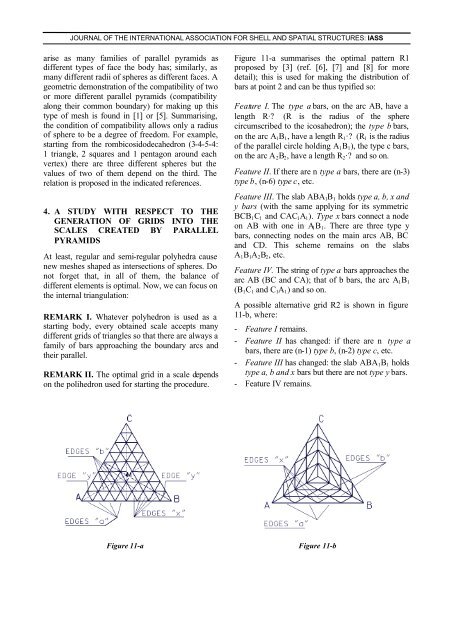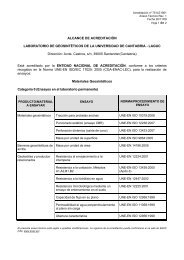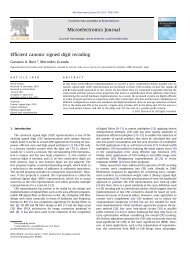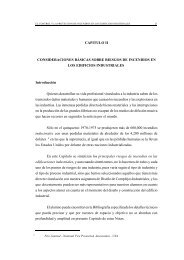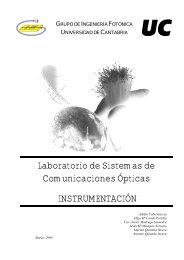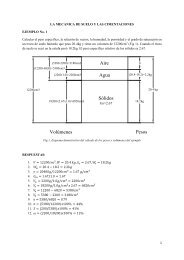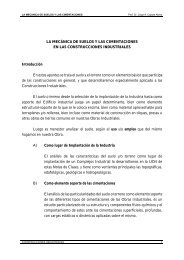designing optimal spatial meshes: cutting by parallel trihedra ...
designing optimal spatial meshes: cutting by parallel trihedra ...
designing optimal spatial meshes: cutting by parallel trihedra ...
Create successful ePaper yourself
Turn your PDF publications into a flip-book with our unique Google optimized e-Paper software.
JOURNAL OF THE INTERNATIONAL ASSOCIATION FOR SHELL AND SPATIAL STRUCTURES: IASSarise as many families of <strong>parallel</strong> pyramids asdifferent types of face the body has; similarly, asmany different radii of spheres as different faces. Ageometric demonstration of the compatibility of twoor more different <strong>parallel</strong> pyramids (compatibilityalong their common boundary) for making up thistype of mesh is found in [1] or [5]. Summarising,the condition of compatibility allows only a radiusof sphere to be a degree of freedom. For example,starting from the rombicosidodecahedron (3-4-5-4:1 triangle, 2 squares and 1 pentagon around eachvertex) there are three different spheres but thevalues of two of them depend on the third. Therelation is proposed in the indicated references.4. A STUDY WITH RESPECT TO THEGENERATION OF GRIDS INTO THESCALES CREATED BY PARALLELPYRAMIDSAt least, regular and semi-regular polyhedra causenew <strong>meshes</strong> shaped as intersections of spheres. Donot forget that, in all of them, the balance ofdifferent elements is <strong>optimal</strong>. Now, we can focus onthe internal triangulation:REMARK I. Whatever polyhedron is used as astarting body, every obtained scale accepts manydifferent grids of triangles so that there are always afamily of bars approaching the boundary arcs andtheir <strong>parallel</strong>.REMARK II. The <strong>optimal</strong> grid in a scale dependson the polihedron used for starting the procedure.Figure 11-a summarises the <strong>optimal</strong> pattern R1proposed <strong>by</strong> [3] (ref. [6], [7] and [8] for moredetail); this is used for making the distribution ofbars at point 2 and can be thus typified so:Feature I. The type a bars, on the arc AB, have alength R·? (R is the radius of the spherecircumscribed to the icosahedron); the type b bars,on the arc A 1 B 1 , have a length R 1·? (R 1 is the radiusof the <strong>parallel</strong> circle holding A 1 B 1 ), the type c bars,on the arc A 2 B 2 , have a length R 2·? and so on.Feature II. If there are n type a bars, there are (n-3)type b, (n-6) type c, etc.Feature III. The slab ABA 1 B 1 holds type a, b, x andy bars (with the same applying for its symmetricBCB 1 C 1 and CAC 1 A 1 ). Type x bars connect a nodeon AB with one in A 1 B 1 . There are three type ybars, connecting nodes on the main arcs AB, BCand CD. This scheme remains on the slabsA 1 B 1 A 2 B 2 , etc.Feature IV. The string of type a bars approaches thearc AB (BC and CA); that of b bars, the arc A 1 B 1(B 1 C 1 and C 1 A 1 ) and so on.A possible alternative grid R2 is shown in figure11-b, where:- Feature I remains.- Feature II has changed: if there are n type abars, there are (n-1) type b, (n-2) type c, etc.- Feature III has changed: the slab ABA 1 B 1 holdstype a, b and x bars but there are not type y bars.- Feature IV remains.Figure 11-a Figure 11-b


